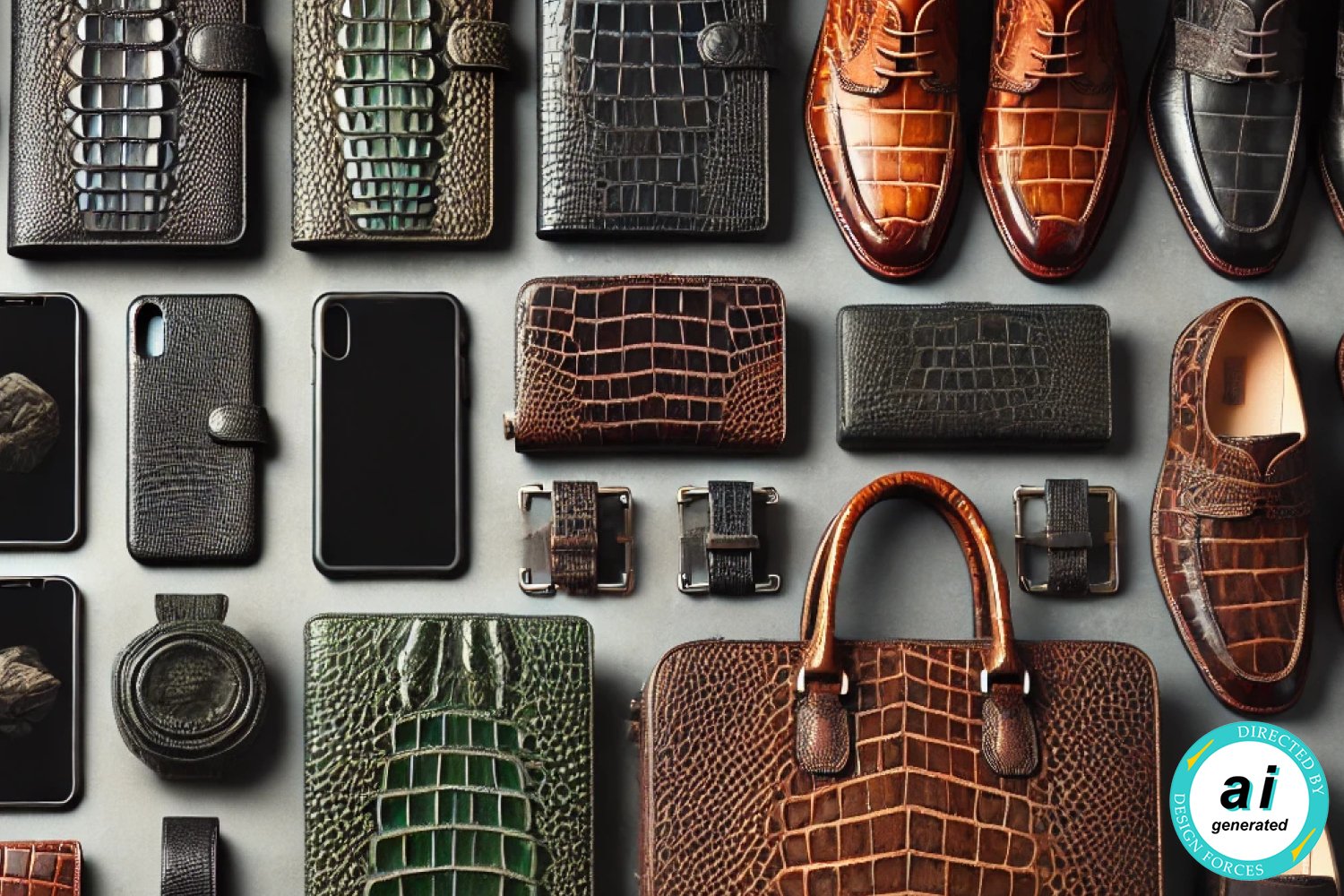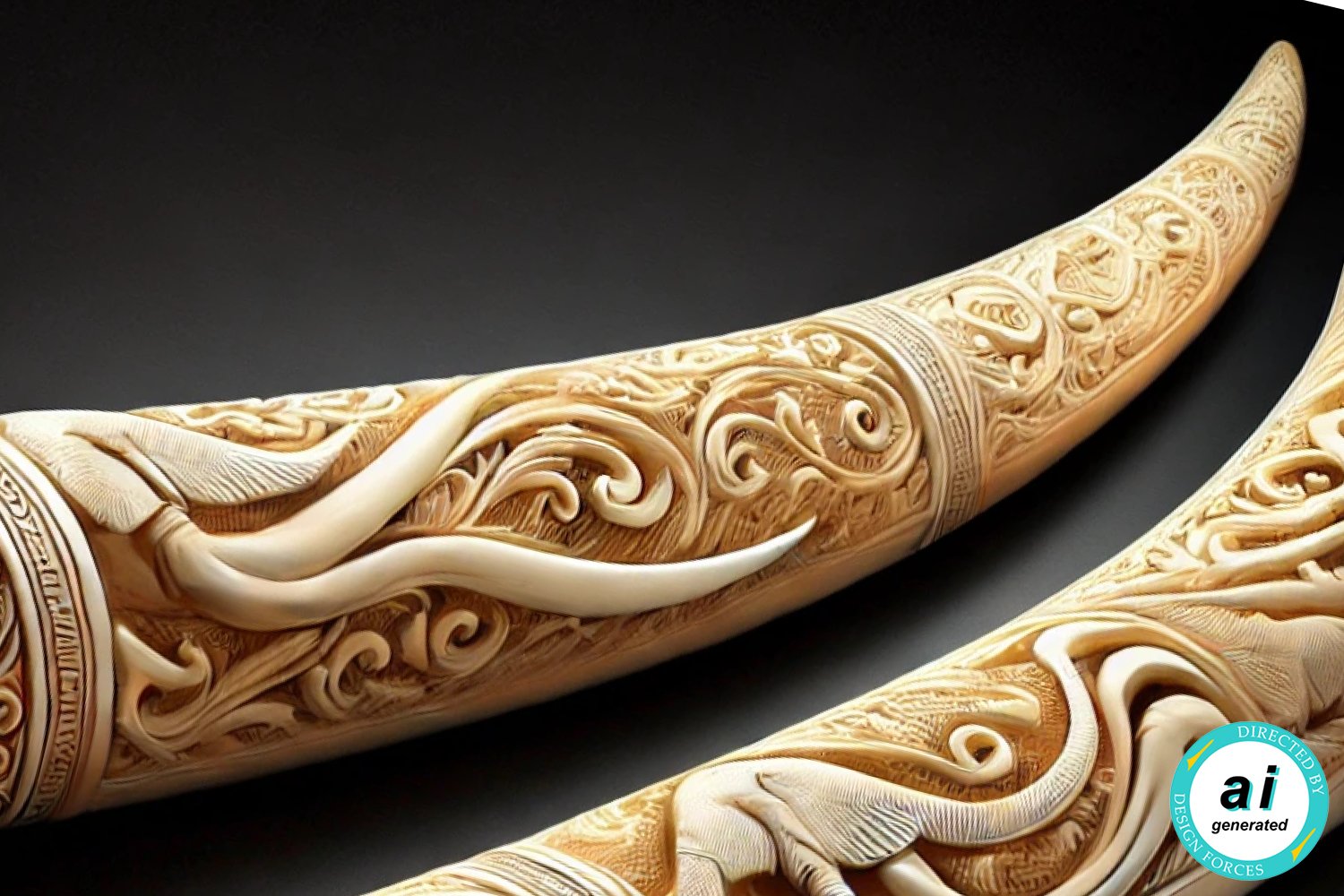Animal
Cattle Horn
Characteristics
Encompassing cow, bull, buffalo, yak, and bison. Esteemed for the density, robustness, and natural colors such as dark brown and deep black, with streaked patterns in the brown range and yellowish white. The structure allows for high polish and fine detailing, thus ideal for intricate craftsmanship. Also unlikely to cause allergic reactions on the skin.
Typical Applications
Eyewear: Frames for eyeglasses and sunglasses, where the durability and aesthetic appeal are highly valued.
Utility products: Knife and cutlery handles, buttons, and combs.
Misc.: Bespoke artisanal items and traditional musical instruments.
Recycling & Regeneration
Grown during the animals’ life and thereby a natural byproduct of the livestock industry. Can be repurposed for other uses, in the production of fertilizers or as a composite material. A biodegradable and renewable material when harvested and processed responsibly.



Crocodile & Alligator Leather
Characteristics
Including various species of crocodilians distinguished by their scale patterns. The belly leather of crocodile has a bit irregular scale pattern with more variation in sizes, and visible sensory pores, whereas alligator is more pliable and has more symmetrical, rectangular scales. Durable with exotic look. Can be colored. Matte or glossy finish.
Typical Applications
Crocodile hides can have larger dimensions than those of alligators. The belly leather is significantly more expensive than the back leather.
Accessories: Handbags, wallets, belts, watch straps, smartphone cases.
Misc.: Outerwear, footwear, upholstery, furniture inlays, luggage.
Recycling & Regeneration
The leather is long-lasting and can be repurposed into new items. Along with resource and waste management in the production, responsible farming and legal sales of both skins should follow the Convention on International Trade in Endangered Species of Wild Fauna and Flora (CITES).




Feathers
Characteristics
Used by birds for flight, insulation, waterproofing, and display. Feathers can be strong and rigid or flexible and fluffy, depending on their function.
They vary in size, shape, and color. The images below show feathers from four different geographies: arctic, forest, tropical, and desert.
Typical Applications
Insulation (Down feathers): Jackets, sleeping bags, pillows, comforters.
Fashion: Millinery/hats, ornaments, costumes, dresses.
Accessories: Boas, scarves, shoes, bags, earrings, necklaces.
Home Décor: Masks, wall art, lampshades, pillows.
Writing/calligraphy: Quill pens.
Recycling & Regeneration
Void of sunlight and moisture, feathers can potentially last decades. For cruelty-free and potentially more durable options, there is an increased focus on sourcing down feathers from birds that are not live-plucked, but instead collected as a byproduct of the food industry, along with research into synthetic alternatives.



Ivory
Characteristics
Dense and smooth material that can be intricately carved and polished to achieve a glossy luster. The color is creamy white or light yellow, darkening with age. Comes primarily from the tusks and teeth of elephants, narwhals, and walruses. African elephants can have tusks longer than 2 meters, but it is virtually impossible to buy them legally.
Typical Applications
Mainly found in antiques due to wildlife protection.
Products: Mirror frames, fans, handles, sculptures, containers, piano keys, buttons, furniture inlays.
Narwhal: Walking sticks, canes, magical unicorn horns.
Jewelry: Bracelets, bangles, necklaces, earrings.
Gaming: Dice, dominoes, chess sets, billiard balls.
Recycling & Regeneration
Elephants, the primary source, usually live for five decades or longer, and even harvesting from natural deaths is mostly banned. So the tusks cannot easily be regenerated. Only legal antique pieces of ivory can be traded and reused. Yet, many synthetic materials now exist to provide a similar appearance without this legal or ethical concern.



Pearl & Mother of Pearl
Characteristics
The iridescent material nacre, layered around an external irritant, such as a sand grain, within a shellfish.
Naturally this is rare, whereas cultivated pearls are encouraged through human implantation. Typical shapes are round or oval. Colors are white, cream, pink, black and gold. Mother of pearl is nacre on the inside of the shells.
Typical Applications
Jewelry: Necklaces, earrings, bracelets, rings, brooches, tiaras, pendants, cufflinks, miscellaneous inlays.
Products: Chandeliers, tool handles, pens, smartphone cases, inlays for furniture, musical instruments, watch dials, mirrors, vases, wall art, buttons, accessories decoration.
Cosmetics: Pearl powder in creams, masks, face powders.
Recycling & Regeneration
Generally durable and biodegradable. Recycling involves repurposing broken or unused items into new creations. The aquaculture and farming of pearls is generally sustainable, depending on farming practices, location, and energy consumption. Similarly, mother of pearl is often obtained from farmed mollusks/shellfish.



Silk
Characteristics
Traditional mulberry silk is a natural fiber produced by silkworms. Drapable, biocompatible, relatively strong and highly flexible with moisture-wicking properties. The texture feels soft, smooth, non-abrasive, and gentle. Appearance is shimmering with a subtle natural luster. There also exist animal, synthetic, and natural alternatives.
Typical Applications
Apparel: Textiles, threads, garments, lingerie, linings, embroidery.
Accessories: Ties, bow ties, scarves, shawls, gloves, sleeping masks.
Home: Bedding, curtains, upholstery, threads, embroidery.
Crafts: Framed embroidery, painted silk art, silk printing.
Other: Space textiles. Medical sutures, implants. Silk protein cosmetics.
Recycling & Regeneration
The structure of silk fibers makes recycling challenging.
Silk can be repurposed into other applications, or its proteins can be extracted. Sericulture involves mulberry tree cultivation, silkworm farming, water and waste management. Producers following the non-harm principles called Ahimsa are often considered more regenerative.



Snake Skin
Characteristics
The skin has a unique structure and texture, being soft and flexible, yet durable and strong. The scales can be uneven or smooth, with either a matte or glossy finish. Natural colors vary from green and brown to yellow, red, and blue. The most popular patterns include diamond, blotched, and striped. Most snake leathers can be dyed.
Typical applications
Fashion: Coats, jackets, pants, skirts, shoes, sandals, boots.
Accessories: Watch straps, wallets, handbags, luggage, phone cases, gloves, clutches, sheaths, holsters, jewelry inlays.
Interior: Upholstery, cushions, decorative panels, wallpaper.
Other: Taxidermy, guitar straps, drum covers, seat covers.
Recycling & Regeneration
Snake leather can typically last one to two decades and be repurposed into new items. The meat is edible and can be cooked. Regulated farming helps against overexploitation of wild populations. For more information, see the
Convention on International Trade in Endangered Species of Wild Fauna and Flora (CITES).










